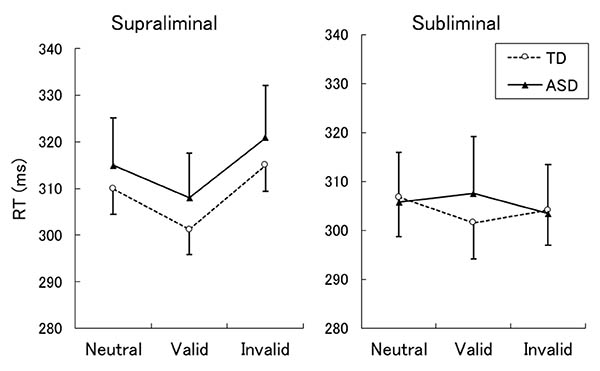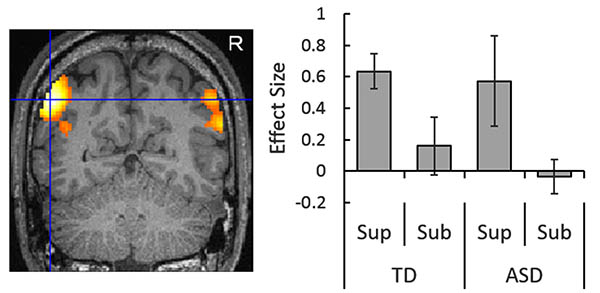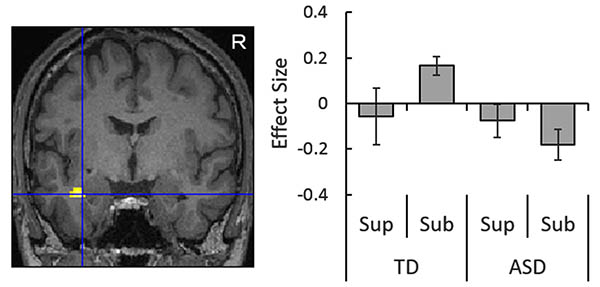SATO Wataru Laboratory
Neural mechanisms underlying conscious and unconscious gaze-triggered attentional orienting in autism spectrum disorder
(Sato, Kochiyama, Uono, Yoshimura, & Toichi: Front Hum Neurosci)
Impaired joint attention represents the core clinical feature of autism spectrum disorder (ASD).
Behavioral studies have suggested that gaze-triggered attentional orienting is intact in response to supraliminally presented eyes but impaired in response to subliminally presented eyes in individuals with ASD.
However, the neural mechanisms underlying conscious and unconscious gaze-triggered attentional orienting remain unclear.
We investigated this issue in ASD and typically developing (TD) individuals using event-related functional magnetic resonance imaging.
The participants viewed cue stimuli of averted or straight eye gaze direction presented either supraliminally or subliminally and then localized a target.
Reaction times were shorter when eye-gaze cues were directionally valid compared with when they were neutral under the supraliminal condition in both groups; the same pattern was found in the TD group but not the ASD group under the subliminal condition.

The temporo-parieto-frontal regions showed stronger activation in response to averted eyes than to straight eyes in both groups under the supraliminal condition.

The left amygdala was more activated while viewing averted vs. straight eyes in the TD group than in the ASD group under the subliminal condition.

These findings provide an explanation for the neural mechanisms underlying the impairment in unconscious but not conscious gaze-triggered attentional orienting in individuals with ASD and suggest possible neurological and behavioral interventions to facilitate their joint attention behaviors.
Return to
Recent Research.
Return to
Main Menu.


